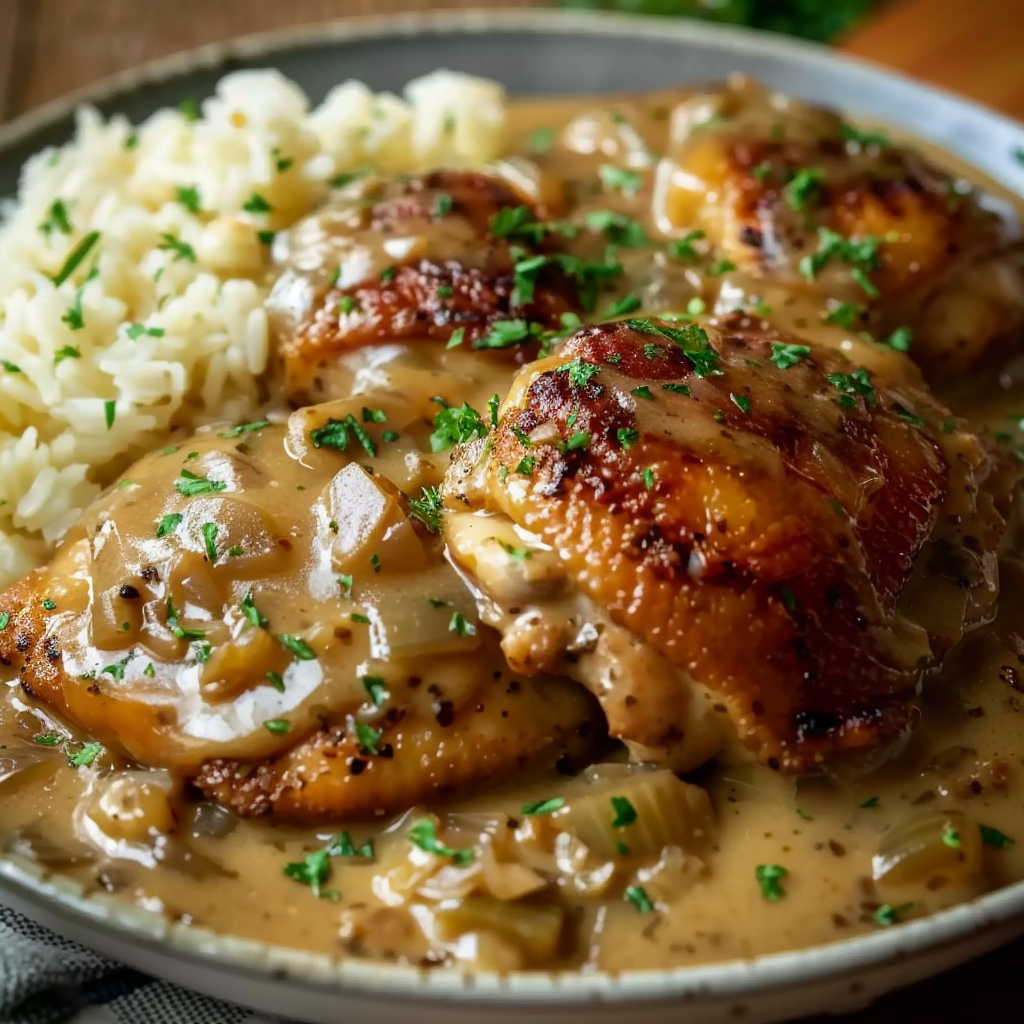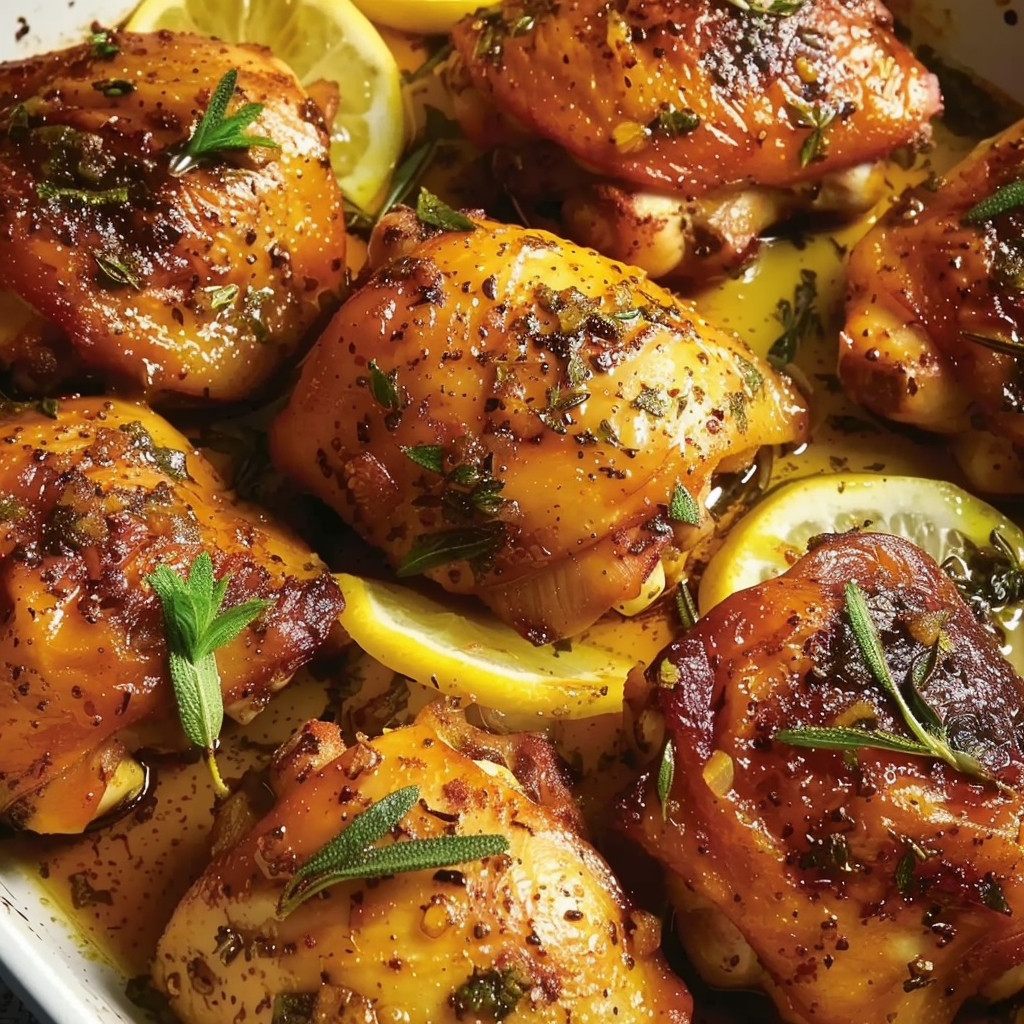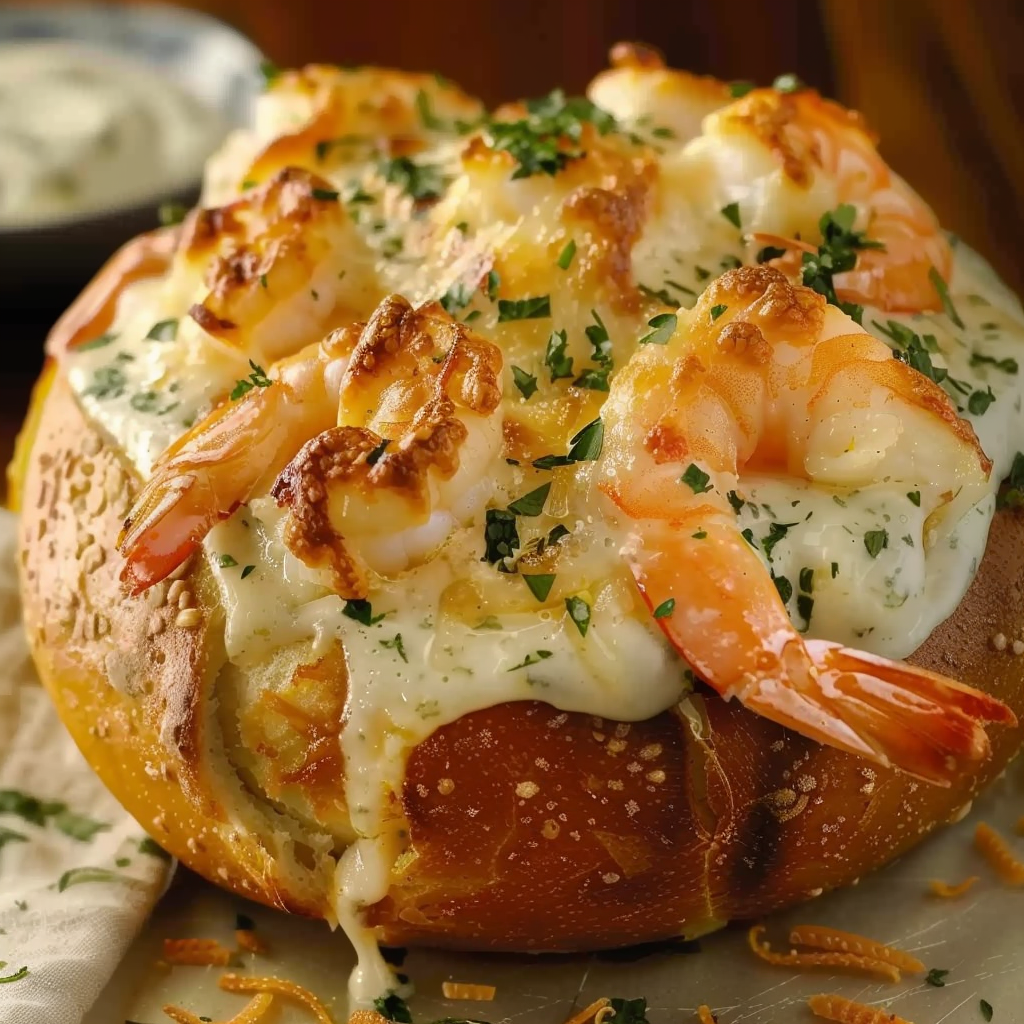Smothered Chicken Thighs
Southern smothered chicken is a beloved comfort food that embodies the warmth and heartiness of traditional Southern cuisine. Featuring chicken thighs simmered in creamy onion gravy, this skillet meal is both satisfying and deeply flavorful. With roots in home-style cooking and soul food traditions, smothered chicken has become a staple on dinner tables across the South and beyond.
What makes this dish stand out is the use of boneless chicken thighs, which cook faster while still offering rich, juicy flavor. The thighs are seared until golden and then simmered in a velvety gravy made with onions, garlic, broth, and cream. This one-skillet method creates a dish that is both easy to prepare and irresistibly indulgent.
Smothered chicken is often associated with Southern cuisine history, drawing influences from African American, Creole, and rural cooking traditions. According to Wikipedia, soul food evolved from resourceful cooking practices using limited ingredients, transforming humble meals into flavorful staples. This dish reflects that ingenuity — using pantry basics like flour, onion, and broth to create layers of flavor.
The creamy, onion-based gravy is a defining feature of the dish. It envelops the chicken, infusing it with savory richness. For those interested in exploring more about gravies, the gravy guide on Wikipedia offers useful context on the variations and techniques used across cultures.
Not only is smothered chicken a comforting main course, it also pairs beautifully with sides like buttered rice, mashed potatoes, or even Southern-style cornbread. The sauce alone is worth savoring — its luxurious texture and deep flavor elevate this dish into a true Southern classic.
On platforms like Pinterest, you’ll find countless variations of skillet chicken dishes, with smothered chicken continuing to trend as a must-try meal for fall and winter cooking. Its popularity lies in its versatility — whether you’re making a quick weeknight dinner or a soulful Sunday supper, smothered chicken never disappoints.
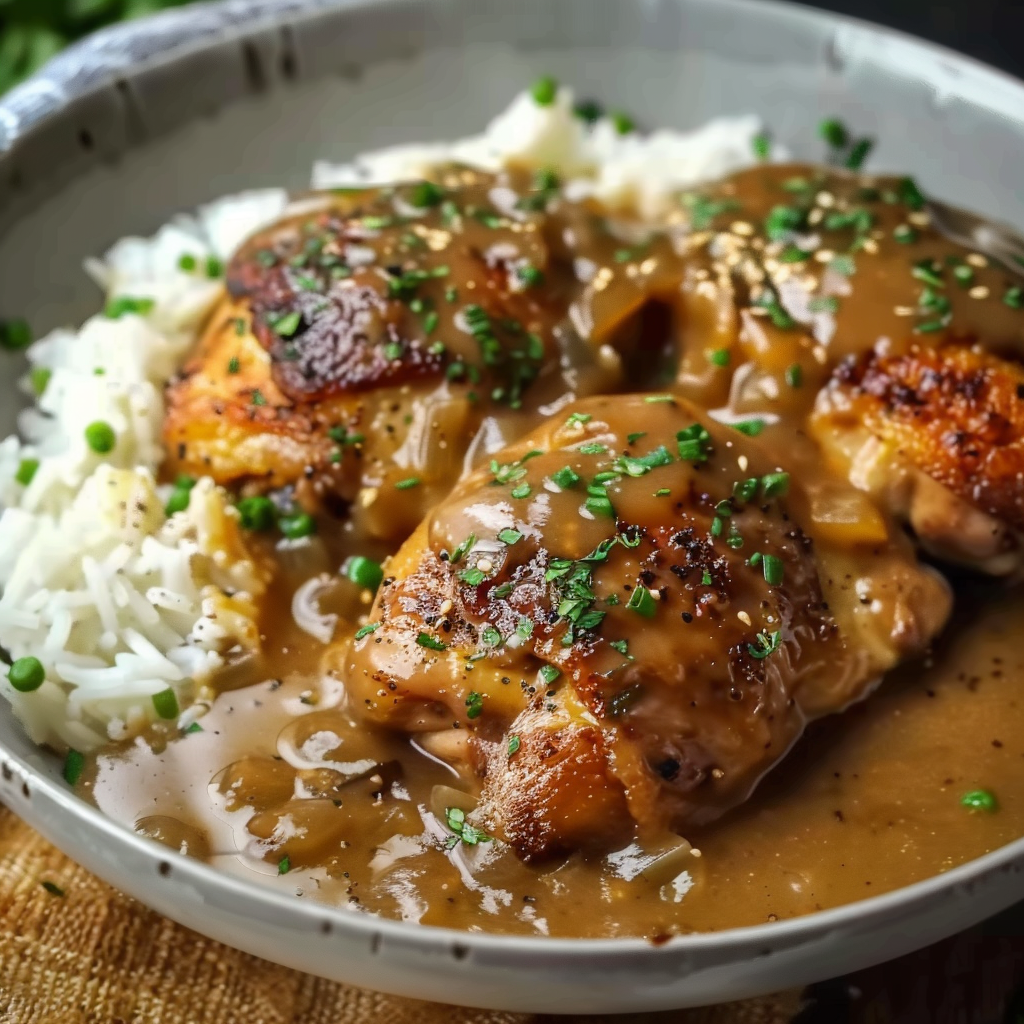
Origins of Southern Smothered Chicken
The roots of Southern smothered chicken run deep through the history of soul food and regional American cuisine. This dish, known for its hearty, flavorful profile, evolved from a blend of African, European, and Native American culinary traditions — especially those found in the rural South. Historically, “smothering” was a practical technique used to tenderize tougher cuts of meat by slowly cooking them in a covered pan with liquid and aromatics.
The term “smothered” refers to this specific method — a form of braising where meat is cooked low and slow in its own juices or a savory sauce. This approach allowed home cooks, often with limited resources, to transform inexpensive ingredients into meals that were deeply flavorful and comforting. As noted in the Wikipedia entry on soul food, dishes like smothered chicken emerged from the ingenuity of enslaved African Americans, who adapted recipes using available ingredients while preserving their culinary heritage.
Over time, smothered chicken became a staple in Southern households. Variations appeared in Creole and Cajun cooking as well, where the addition of spices and ingredients like bell peppers, mushrooms, or tomatoes created regional differences. Today, many recipes still honor the original concept, though ingredients and cooking times have been modernized.
This dish is also closely connected to the use of cast iron skillets, which were, and still are, kitchen essentials in the South. These heavy-duty pans distribute heat evenly and are ideal for browning meats and simmering sauces. You can learn more about their role in traditional cooking from this Wikipedia article on cast iron cookware.
On platforms like Pinterest, Southern comfort food continues to inspire new interpretations of smothered dishes, with countless pins showcasing updated versions of this classic — from gluten-free adaptations to dairy-free gravies. This evolution reflects the ongoing relevance and adaptability of a meal deeply rooted in history yet constantly being reimagined for today’s kitchens.
Why Use Boneless Chicken Thighs?
Using boneless chicken thighs in smothered chicken recipes offers several advantages without compromising flavor or texture. Traditionally, bone-in cuts were used for their deep flavor and affordability, but modern home cooks often prefer boneless thighs for convenience and quicker cooking time.
Boneless thighs are naturally more tender than chicken breasts and contain more fat, which results in juicier meat. They also absorb seasoning and gravy more effectively. Unlike breasts, which can dry out during simmering, thighs remain moist and flavorful, making them ideal for braising in rich, onion-based sauces.
Additionally, when using boneless thighs, the overall cook time is reduced. This is especially useful for weeknight meals when time is limited but comfort is still a priority. The absence of bones also makes the dish easier to eat and more approachable for families or guests unfamiliar with Southern classics.
In skillet recipes featured on Pinterest, boneless thighs are often highlighted in one-pan meals, combining ease of prep with a depth of flavor that rivals more traditional methods. Their versatility allows for a range of adaptations — from spicy Cajun versions to lighter dairy-free sauces — without losing the essential character of the dish.
Whether you’re following a heritage recipe or creating a modern twist, boneless chicken thighs deliver comfort and efficiency, making them the perfect centerpiece for smothered chicken with creamy onion gravy.
Ingredients Breakdown and Substitutions
For the Chicken
The flavor of Southern smothered chicken thighs starts with a simple but impactful seasoning blend. Each spice and ingredient serves a purpose in developing the depth of flavor that defines this dish.
-
Chicken Thighs: Boneless, skin-on chicken thighs provide a perfect balance of flavor, tenderness, and fat. If you prefer leaner cuts, you can substitute with chicken breasts, but they may not be as juicy.
-
Salt and Pepper: Basic but essential for enhancing the natural flavor of the meat.
-
Garlic Powder & Onion Powder: These pantry staples add a foundational savory taste. They deepen the umami of the dish without overpowering it.
-
Paprika: Adds mild heat and a smoky edge. Smoked paprika can be used for a more intense flavor.
Instead of olive oil, many traditional recipes call for bacon fat or lard. While olive oil offers a lighter, heart-healthy option, rendered bacon fat infuses a smoky undertone that reinforces the dish’s Southern roots. This substitution is often discussed in Southern comfort food recipes on Pinterest, where variations reflect personal and regional preferences.
For the Gravy
The gravy is the heart of this dish — a silky, creamy onion sauce that envelops the chicken and pairs beautifully with starches like mashed potatoes or rice.
-
Butter: Unsalted butter is used to sauté the onions and create a base for the roux. You can use ghee for a nuttier flavor or dairy-free margarine for a vegan twist.
-
Onion: Finely chopped onion adds sweetness and depth. Yellow or white onions are most commonly used.
-
Garlic: Adds sharpness and aroma, complementing the milder flavor of the onions.
-
All-Purpose Flour: Key for making a roux — the thickening base for the gravy. If you’re avoiding gluten, substitute with a 1:1 gluten-free flour blend or use cornstarch (added later as a slurry).
-
Chicken Broth: Use low-sodium broth to control salt levels. Wikipedia notes that broth not only provides moisture but enhances meat’s savory qualities.
-
Heavy Cream: Adds richness and velvety texture. Alternatives include half-and-half, evaporated milk, or non-dairy creamers for a lactose-free version.
-
Dried Thyme: This herb adds an earthy note. It can be swapped for oregano or Italian seasoning if preferred.
-
Parsley (optional): Fresh parsley brightens the dish just before serving, offering contrast to the creamy gravy.
These ingredients, though simple, layer together to create a complex, soul-satisfying flavor. When combined in a cast iron skillet — one of the most trusted tools in traditional cooking — they result in a dish that’s as beautiful as it is delicious. Learn more about how the cast iron skillet plays a vital role in dishes like this on Wikipedia.
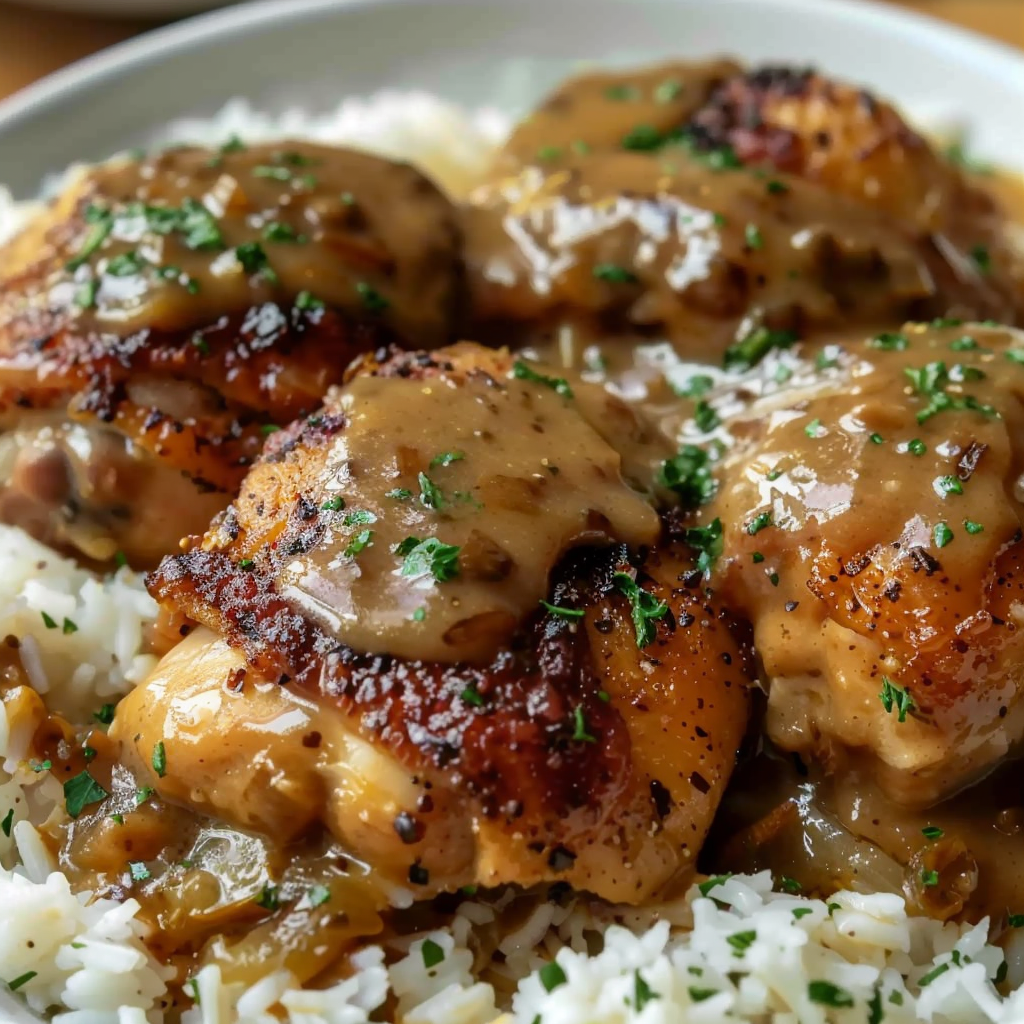
Step-by-Step Cooking Instructions
Mastering Southern smothered chicken thighs with creamy onion gravy begins with a few essential steps. Each stage—from seasoning to simmering—plays a role in creating rich, layered flavor and perfectly tender meat.
-
Season the Chicken
Start by patting dry 6 boneless, skin-on chicken thighs. Season generously with salt, black pepper, garlic powder, onion powder, and paprika. This dry rub infuses the meat with robust flavor while helping develop a crisp, golden crust during searing. -
Sear the Chicken
Heat 2 tablespoons of olive oil in a large skillet over medium-high heat. Once hot, place the chicken thighs skin-side down. Cook for 5–6 minutes until deeply browned. Flip and cook for another 3–4 minutes. Transfer the chicken to a plate and set aside. This step locks in moisture and builds a flavorful base for the gravy. -
Sauté Aromatics
Reduce heat to medium. Add 2 tablespoons of unsalted butter to the same skillet. Once melted, stir in 1 finely chopped onion. Cook until softened, about 3–4 minutes, scraping up any browned bits from the bottom of the pan. Add 3 minced garlic cloves and cook for another minute until fragrant. -
Make the Roux
Sprinkle in 2 tablespoons of all-purpose flour, stirring continuously to combine with the butter and aromatics. Cook for 1–2 minutes until the flour turns light golden. This forms the roux, which will thicken the gravy. -
Build the Gravy
Slowly pour in 2 cups of chicken broth, whisking to avoid lumps. Stir in ½ cup of heavy cream and 1 teaspoon of dried thyme. Bring to a gentle simmer, allowing the flavors to meld and the sauce to thicken. If desired, refer to the Wikipedia guide on roux to better understand this fundamental cooking technique. -
Return Chicken to the Skillet
Nestle the browned chicken thighs into the simmering gravy, skin-side up. Spoon a bit of gravy over the top to help flavor the meat. Cover the skillet with a lid and reduce heat to low. Simmer gently for 25–30 minutes until the chicken is fork-tender and cooked through. -
Final Touches
Taste the gravy and adjust seasoning with salt and pepper if needed. Garnish with freshly chopped parsley before serving, if desired.
Many one-pan chicken dishes featured on Pinterest highlight this same technique—sear, sauté, simmer—which ensures maximum flavor with minimal effort. Serve your smothered chicken over buttered rice, creamy mashed potatoes, or fluffy cornbread for a true Southern-style comfort meal.
What to Serve with Smothered Chicken Thighs
The rich, savory gravy of smothered chicken calls for equally comforting sides that can soak up every drop. Here are the best pairings to complement this hearty dish:
-
Mashed Potatoes: A classic base for the creamy gravy, offering a smooth, buttery counterbalance to the seasoned chicken.
-
Buttered White Rice or Brown Rice: The neutral flavor of rice allows the bold onion gravy to shine. For a Southern twist, use jasmine or Carolina gold rice.
-
Cornbread: Sweet or savory, cornbread’s crumbly texture pairs beautifully with thick, savory sauce.
-
Creamed Spinach or Southern Collard Greens: A nutrient-rich side that brings balance and freshness.
-
Green Beans or Roasted Vegetables: Lightens the meal and adds color to the plate.
On Pinterest, these combinations are frequently showcased alongside Southern skillet meals, reflecting the regional love for soul-satisfying food that’s both filling and flavorful.
Whether you’re preparing this dish for a weeknight family dinner or a weekend gathering, choosing the right sides ensures that the smothered chicken takes center stage while creating a well-rounded, comforting meal.
Chef’s Tips for Perfect Smothered Chicken
Achieving restaurant-quality smothered chicken thighs at home is easier than it looks when you follow these tested techniques:
-
Get the Pan Hot Before Searing: A hot pan creates a golden crust and locks in moisture. Use a cast iron skillet for best results.
-
Avoid Crowding the Pan: Cook the chicken in batches if needed to prevent steaming. Browning equals flavor.
-
Whisk the Gravy Constantly: Prevent lumps and achieve a silky-smooth consistency by whisking as you add broth and cream.
-
Use Low Heat for Simmering: A gentle simmer allows the chicken to stay moist and absorb the gravy’s full flavor without overcooking.
-
Rest the Dish Before Serving: Let the chicken sit in the gravy off heat for 5–10 minutes. This helps the gravy thicken and flavors settle.
These tips are echoed across chicken thigh recipes on Pinterest, where skillet meals and comfort food lovers share techniques to perfect this Southern classic.
Recipe Variations and Customizations
One of the best parts about this dish is its adaptability. Here are popular ways to customize your smothered chicken:
-
Spicy Cajun Version: Add Cajun seasoning, cayenne pepper, or hot sauce to the spice mix and gravy for a kick.
-
Mushroom and Onion Gravy: Sauté mushrooms with the onions to add earthiness and texture.
-
Bell Peppers and Garlic: For a Creole-inspired twist, include diced bell peppers alongside onions.
-
Dairy-Free: Use coconut cream or almond milk and dairy-free butter. Opt for cornstarch instead of flour for a gluten- and dairy-free version.
-
Gluten-Free: Substitute all-purpose flour with a 1:1 gluten-free flour blend or cornstarch slurry.
-
Bone-In Chicken Thighs or Breasts: While boneless thighs cook faster, bone-in options offer deeper flavor with slightly longer cook time.
-
Slow Cooker or Pressure Cooker Adaptation: Use these methods for set-it-and-forget-it convenience.
Many of these variations are featured in creamy one-pan meal collections on Pinterest, showing the incredible flexibility of this Southern dish.
Storage and Reheating Tips
Leftovers of smothered chicken thighs reheat beautifully, making this a great meal-prep option.
-
Refrigeration: Store leftovers in an airtight container in the fridge for up to 4 days.
-
Freezing: Cool completely, then freeze in a freezer-safe container for up to 2 months. Thaw overnight in the fridge before reheating.
-
Reheating: Reheat on the stovetop over medium-low heat, adding a splash of broth or milk to loosen the gravy. Microwave in 30-second intervals, stirring between each.
These steps ensure the chicken remains tender and the gravy retains its creamy consistency without separating or drying out.
Health Considerations and Nutritional Information
While Southern smothered chicken is rich and indulgent, it can be made lighter with a few adjustments:
-
Calories: A standard serving contains approximately 350–450 calories depending on portion size and cream content.
-
Fat and Protein: Chicken thighs offer a high protein-to-fat ratio. Swap in low-fat cream or half-and-half to reduce overall fat.
-
Carbohydrates: The dish itself is low in carbs. Serve with cauliflower mash or greens for a low-carb option.
To make it healthier without losing its comfort food appeal, use light cream, reduce added butter, and increase vegetables in the gravy. Referencing chicken as food on Wikipedia offers insight into the nutritional breakdown of poultry.
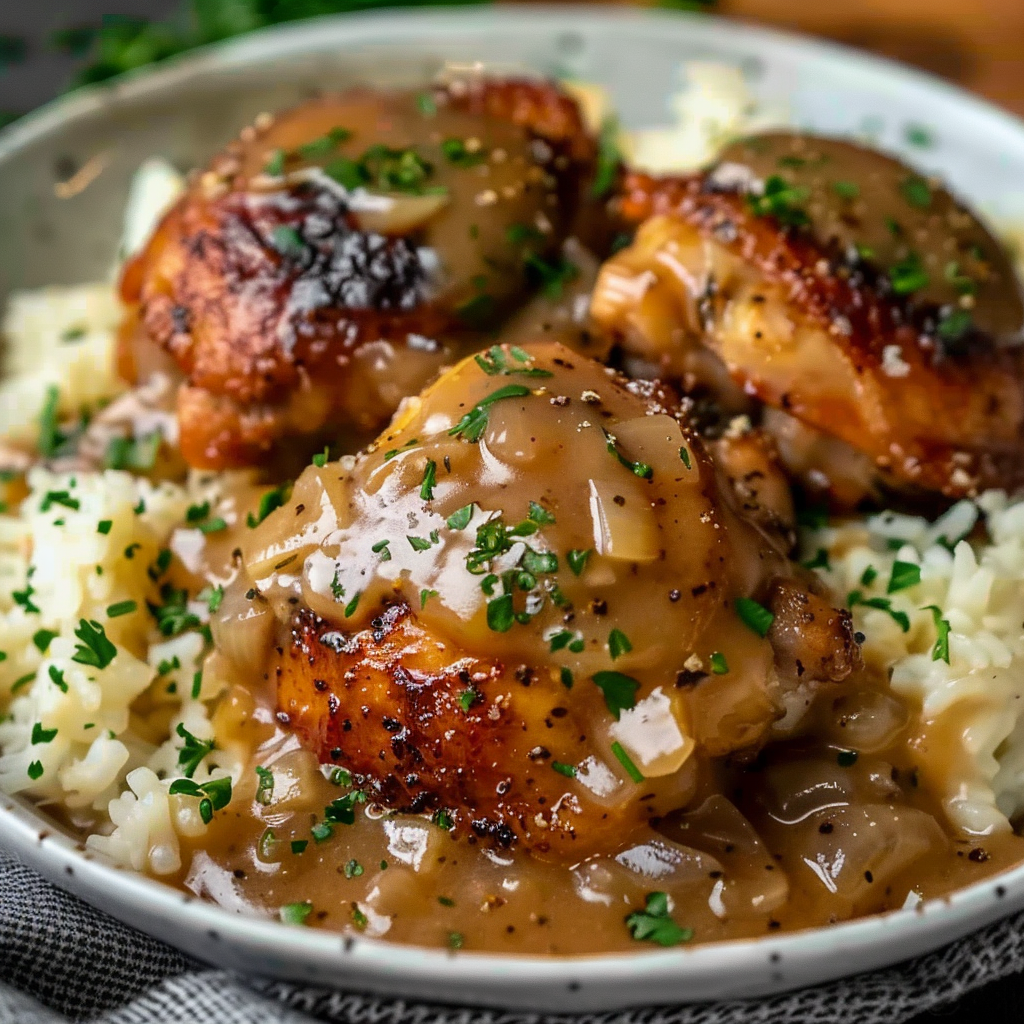
Frequently Asked Questions (FAQs)
Can I use chicken breasts instead of thighs?
Yes, but breasts are leaner and can dry out. Adjust cooking time and consider marinating them first for moisture.
What makes Southern smothered chicken different?
Its use of a slow-simmered, creamy onion gravy and seasoning blend separates it from other chicken dishes.
How do I thicken gravy without flour?
Use cornstarch mixed with water to create a slurry. Add it during simmering to achieve similar thickness.
Can I make this dish dairy-free?
Absolutely. Use dairy-free cream alternatives like coconut milk or cashew cream and replace butter with margarine.
What type of skillet works best for this recipe?
A heavy-bottomed pan like a cast iron skillet provides even heat and helps build fond for the gravy base.
How long does it take to cook chicken thighs in a skillet?
Searing takes 8–10 minutes total, and simmering in gravy takes 25–30 minutes until fully cooked and tender.
Can I double the recipe for a crowd?
Yes, but use a wider pan or two skillets to ensure even cooking. Don’t overcrowd or the chicken may steam.
Is smothered chicken gluten-free?
Not by default, but you can use gluten-free flour or cornstarch to thicken the gravy instead.

Southern Smothered Chicken Thighs with Onion Gravy A Skillet Classic
- Author: Naomi
Description
Southern Smothered Chicken Thighs with Onion Gravy is a timeless one-skillet comfort meal featuring boneless chicken thighs simmered in a rich, creamy onion and garlic gravy. Seasoned with classic spices and finished with a touch of thyme and heavy cream, this dish brings the soul of the South to your table. Perfect over mashed potatoes or buttered rice, it’s hearty, flavorful, and ideal for family dinners or special occasions.
Ingredients
For the chicken:
- 6 bone-in, skin-on chicken thighs
- Salt and pepper to taste
- 1 tsp garlic powder
- 1 tsp onion powder
- 1 tsp paprika
- 2 tbsp olive oil
For the gravy:
- 2 tbsp unsalted butter
- 1 small onion, finely chopped
- 3 cloves garlic, minced
- 2 tbsp all-purpose flour
- 2 cups chicken broth
- ½ cup heavy cream
- 1 tsp dried thyme
- Salt and pepper to taste
- Fresh parsley for garnish (optional)
Instructions
Season the chicken thighs with salt, pepper, garlic powder, onion powder, and paprika
Heat olive oil in a large skillet over medium-high heat. Add the chicken thighs skin-side down and sear until golden brown, about 5-6 minutes. Flip and cook another 3-4 minutes. Remove and set aside
In the same skillet, reduce heat to medium. Add butter and chopped onion. Cook until softened
Stir in garlic and cook for 1 minute until fragrant
Sprinkle in flour and stir to make a roux. Cook for 1-2 minutes until lightly golden
Slowly pour in chicken broth while stirring to avoid lumps. Add heavy cream and thyme. Stir well and bring to a simmer
Return the chicken thighs to the skillet, skin-side up. Spoon some gravy over the top
Cover and simmer on low heat for 25-30 minutes, or until the chicken is cooked through and tender
Adjust seasoning with salt and pepper if needed. Garnish with fresh parsley before serving if desired
Notes
-
Make it ahead: Prepare the dish up to 2 days in advance. Reheat slowly to maintain the gravy’s creamy consistency.
-
Customize the spice level: Add cayenne or hot sauce if you like heat, or keep it mild for family-friendly comfort.
-
Don’t rush the simmer: Allow the chicken to soak in the gravy for maximum flavor and tenderness.
-
Skillet size matters: Use a 12-inch skillet or larger to avoid overcrowding and ensure proper browning.
-
Pair with sides that absorb gravy: Mashed potatoes, cornbread, or rice are ideal partners for this rich sauce.


